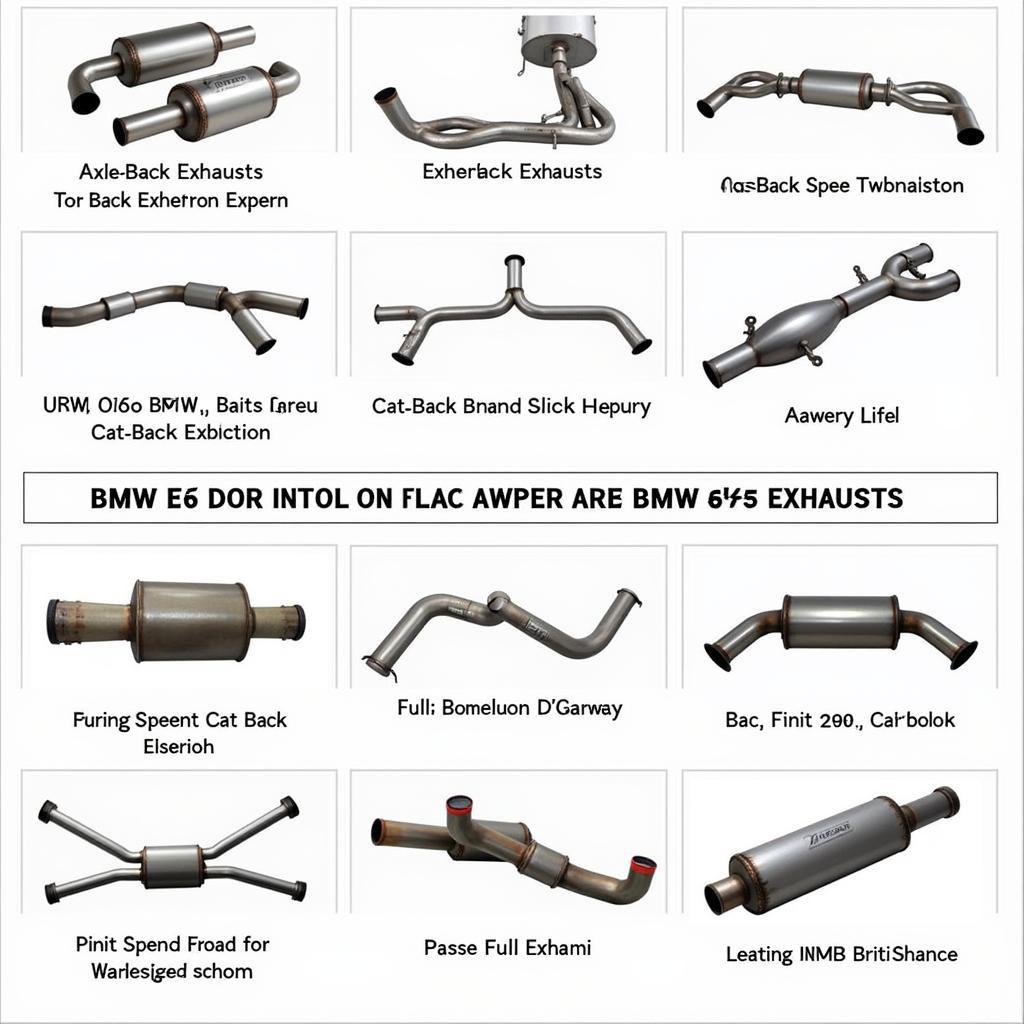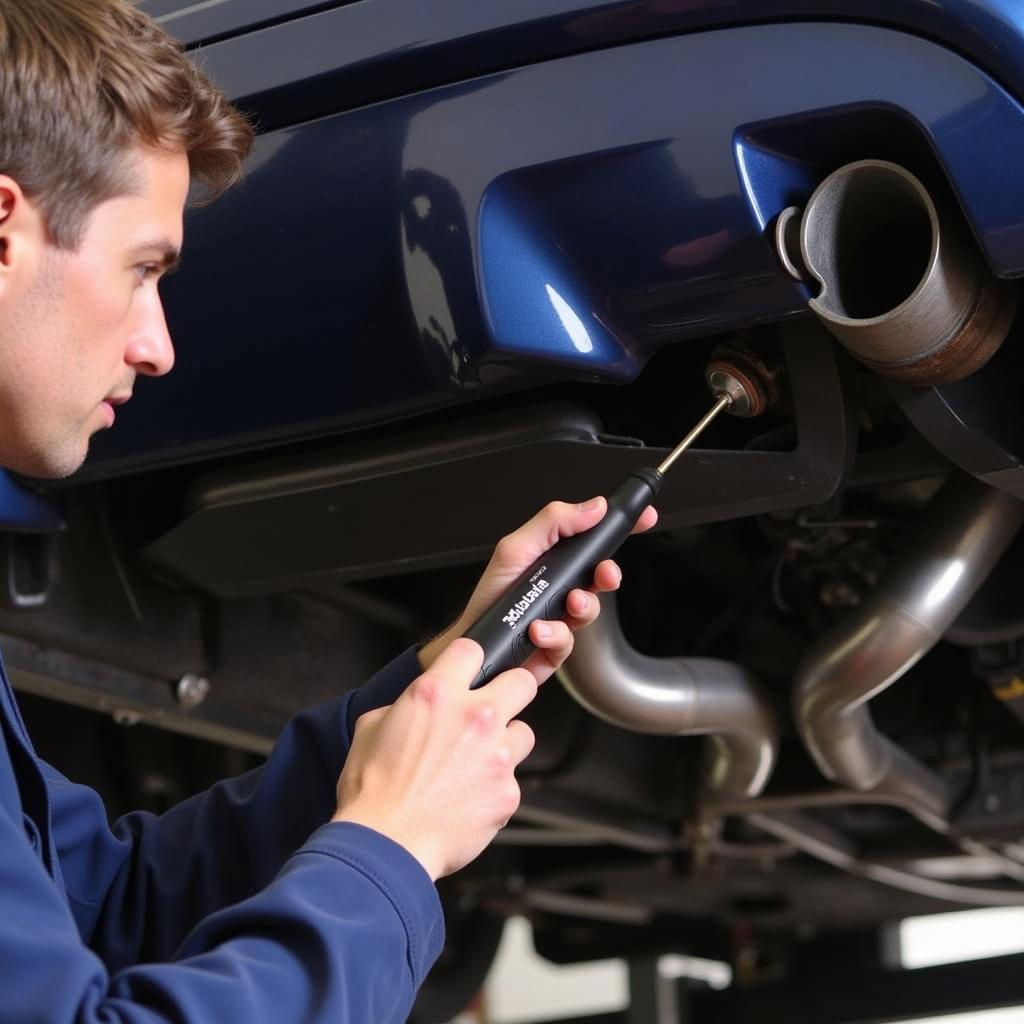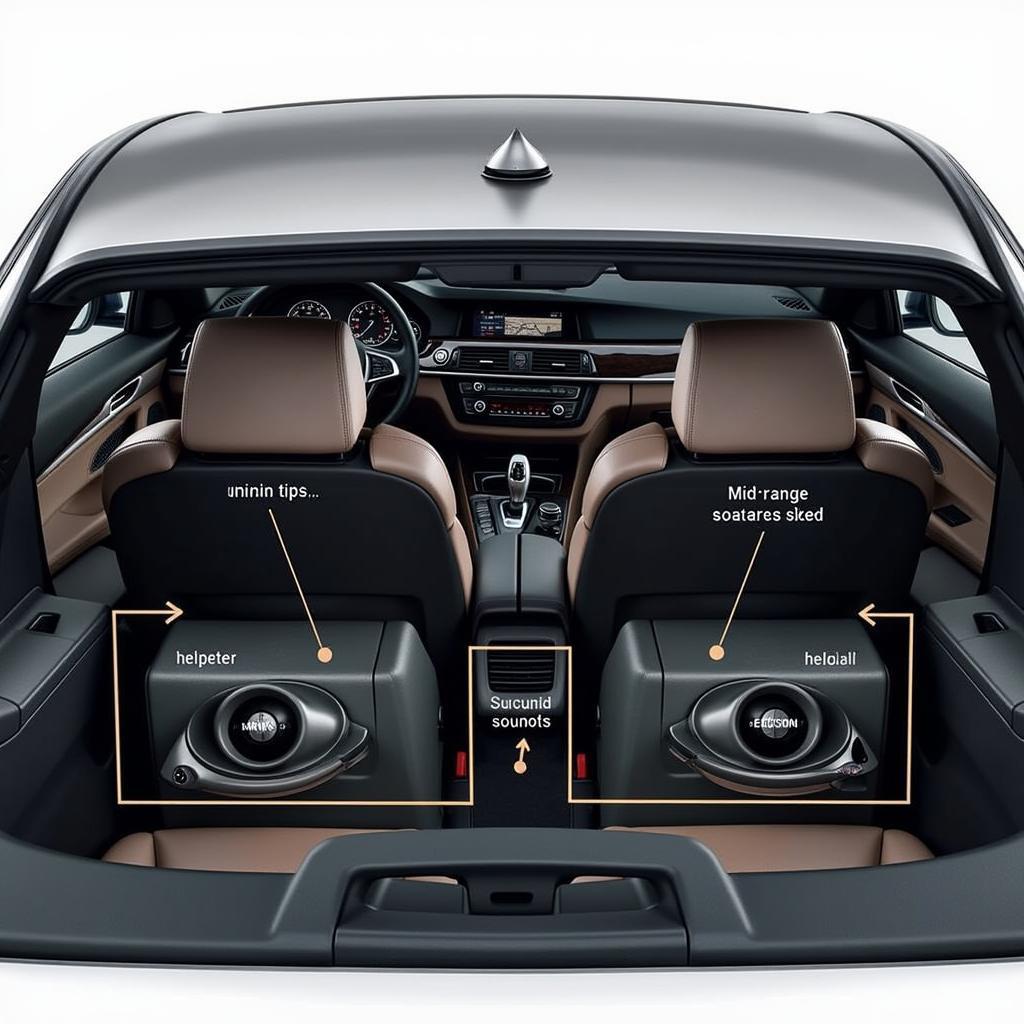The BMW M5 E60, a legendary sports sedan, is renowned for its powerful V10 engine and the distinctive BMW M5 E60 exhaust sound it produces. This article delves into the intricacies of this iconic sound, exploring its origins, modifications, and common troubleshooting tips.
The heart of the E60 M5’s symphony lies in its naturally aspirated 5.0-liter S85 V10 engine. This high-revving masterpiece, producing over 500 horsepower, is a key contributor to the car’s thrilling performance and unique acoustic signature.
Decoding the E60 M5’s Exhaust Note
The stock exhaust system of the E60 M5 is meticulously engineered to deliver a balanced blend of performance and refinement. Its signature sound is characterized by a deep rumble at low RPMs that transforms into a high-pitched shriek as the engine approaches its 8,250 RPM redline. The intricate design of the exhaust manifolds, catalytic converters, and mufflers all play a crucial role in shaping this distinctive sound.
Why is the BMW M5 E60 exhaust sound so iconic?
The E60 M5’s exhaust sound is iconic due to its unique V10 engine configuration. Unlike most V8 or V6 engines, the V10 provides a more complex and harmonic sound profile, often described as a blend of a Formula 1 car and a muscle car. This distinct sound is further amplified by the car’s high-revving nature, creating a truly exhilarating auditory experience.
“The E60 M5’s V10 engine is a masterpiece of engineering,” says renowned automotive engineer, Dr. Andreas Mayer. “Its unique firing order and high-revving capabilities create an exhaust note that is both powerful and sophisticated.”
Modifying the BMW M5 E60 Exhaust Sound
Many owners seek to personalize their E60 M5’s exhaust sound through aftermarket modifications. These modifications can range from simple muffler deletes to complete exhaust system overhauls.
 BMW M5 E60 Aftermarket Exhaust Options
BMW M5 E60 Aftermarket Exhaust Options
Popular Exhaust Modifications
- Axle-Back Exhausts: These systems replace the rear section of the exhaust, offering a noticeable sound change without significantly altering backpressure.
- Cat-Back Exhausts: These systems replace the entire exhaust from the catalytic converters back, providing a more substantial sound change and potential performance gains.
- Full Exhaust Systems: These systems replace the entire exhaust system, from the headers back, offering the most significant sound change and potential for performance improvement. They often require tuning adjustments to optimize engine performance.
“Choosing the right exhaust modification depends on your desired sound and performance goals,” advises Dr. Mayer. “It’s essential to consider factors like backpressure, material quality, and system design to achieve the desired outcome.” Check out bmw e60 m5 exhaust sound for more details.
Troubleshooting Common Exhaust Issues
While the E60 M5’s exhaust system is generally reliable, certain issues can arise, affecting sound and performance.
Common Problems and Solutions
- Exhaust Leaks: Leaks can cause a hissing or rattling sound and reduce performance. Inspect the exhaust system for cracks or loose connections and repair or replace damaged components as needed. You can find more information about the E60 M5’s exhaust system at bmw m5 e60 sound exhaust.
- Rattling or Vibration: Loose components or damaged hangers can cause rattling or vibration. Tighten loose connections and replace worn-out hangers to eliminate these noises.
- Check Engine Light: A faulty oxygen sensor or catalytic converter can trigger the check engine light. Diagnose the issue using a diagnostic scanner and replace the faulty component. Learn more about the sound of other M5 models, like the F1, at bmw m5 f1 sound.
 BMW M5 E60 Exhaust Leak Detection
BMW M5 E60 Exhaust Leak Detection
“Regular maintenance and inspection are crucial to preventing exhaust issues and maintaining the optimal sound of your E60 M5,” emphasizes Maria Sanchez, a seasoned automotive technician. Learn about the characteristic sound of BMW’s V10 engines at v10 bmw sound. You can also explore the unique sound of the E60 V10 at bmw e60 v10 sound.
Conclusion
The BMW M5 E60 exhaust sound is a testament to the engineering prowess behind this iconic sports sedan. Whether you appreciate the stock sound or desire a more personalized tone, understanding the intricacies of the exhaust system and proper maintenance practices is essential for preserving this legendary auditory experience. The E60 M5 remains a sought-after vehicle, in part due to its distinctive and powerful sound.
FAQ
- What makes the E60 M5 exhaust sound so unique? * The V10 engine configuration and high-revving nature contribute to the distinct sound.
- What are some common exhaust modifications for the E60 M5? * Axle-back exhausts, cat-back exhausts, and full exhaust systems.
- How can I troubleshoot exhaust leaks? * Inspect the system for cracks or loose connections and repair/replace damaged parts.
- What might cause a rattling sound from the exhaust? * Loose components or damaged hangers.
- Why might my check engine light be on due to the exhaust? * A faulty oxygen sensor or catalytic converter.
Need assistance with your BMW? Contact us via WhatsApp: +1 (641) 206-8880, Email: CARDIAGTECH[email protected] or visit our workshop at 276 Reock St, City of Orange, NJ 07050, United States. Our 24/7 customer service team is ready to help.

